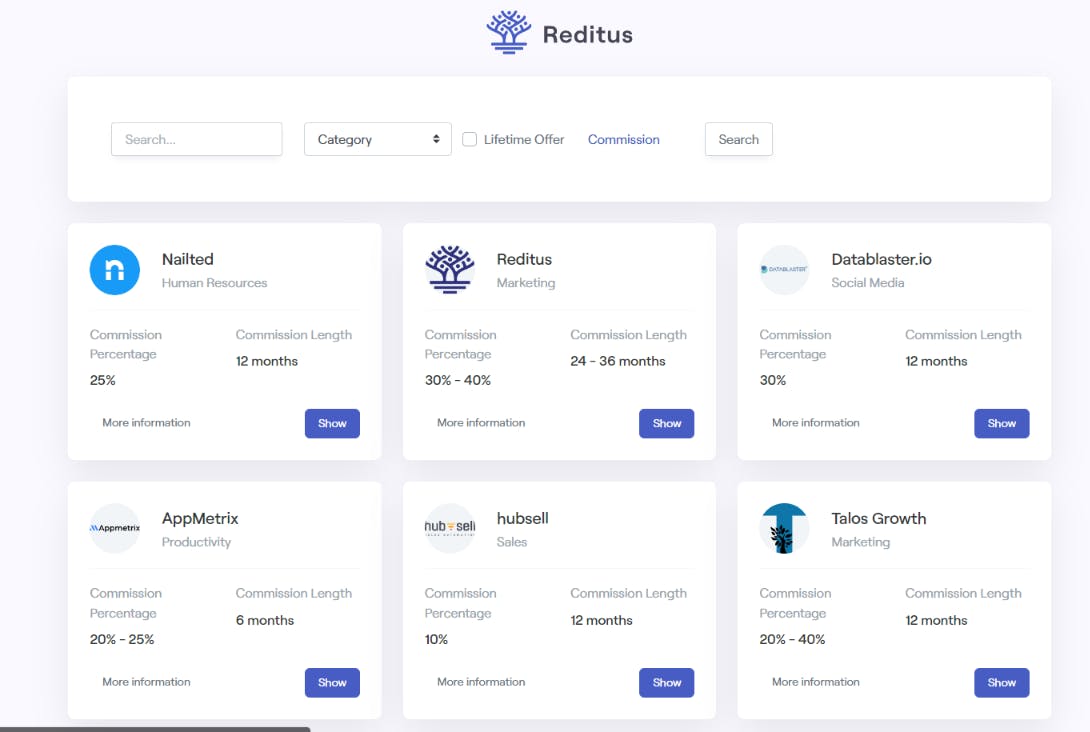10 Methods to Grow Your SaaS Startup Quicker

As a new SaaS startup, you might wonder what you can do to help you increase revenues. If you unveiled your unique product without observing the expected sales, it could be a marketing problem. We have developed a tried and true marketing strategy to help grow your SaaS business continuously.
Every startup entrepreneur seeks ways to catapult their business to success. See 10 tips for accelerating growth for companies with SaaS.
Table of contents
- Market the Problem Instead of your Product
- Properly Charge for your Product
- Identify your Target Market
- Experiment with Pricing
- Offer a transparent and easy-to-scale pricing model
- Listen to your paying customers.
- Marketing Toward your Big Customers
- Exploit Paid Growth Tactics
- Partner with Competitors
- Create Amazing Content
Market the Problem Instead of your Product
The biggest mistake in marketing your SaaS product is focusing on how great it is. Your product is probably revolutionary, but if your audience doesn't know how it will alleviate their problems.
There are a wide variety of SAAS startup niches that provide digital solutions. However, some of these startups succeed, and others fail because they can not sell their solution.
Concentrate your marketing on the problem.
Apple brilliantly did this with the iPhone by focusing on its competitors' shortcomings. Therefore they were able to introduce the solution as something magical.
Identifying customer pain points and offering a solution will define you as a product of higher quality than your competitors. Therefore, customers will believe you are not providing another product for something they don't realize they need.
Properly Charge for your Product
SaaS startups are frequently uncertain about charging customers. Therefore they think their product is not yet ready, and to get traction, they must focus on expanding their customer base rather than growing revenue.
You already work hard to get your product ready for release. Therefore, you should put a price point on your SaaS products.
There are multiple ways to charge for your SaaS offerings properly. If unsure, you can consistently offer a paired-down version of your program as a freemium and set a price for the whole program.
The importance is to create an image of value.
Deep inside, however, you might not have enough faith in your product. Someone will think similarly if you are uncertain of your product's value.
Many SaaS businesses prefer keeping hundreds or thousands of free users attempting to win a few clients. Large numbers are gratifying, but the product remains an unverified idea.
Developing a product should imply it will help increase productivity and, thus, revenue. So do not hesitate too long. Put it to the test by charging it and see if it works in the actual conditions.
Therefore this is one way to minimize your risk too. You might be hesitant because you believe you need to invest massive amounts of time and money. Instead of waiting to launch, launch early.
If you fail or learn that you must pivot, you have not lost all your effort. Therefore, this is an excellent way to validate that your idea has to traction in the marketplace. It also shows you if you are ready to grow your SaaS.
People genuinely value paying what they can afford. By spending money, people demonstrate they acknowledge your value. Charging early will drive away freebie collectors, but serious customers will stay with you.
Time, effort, and money often don't bring the desired results. Therefore, this could be a targeting problem in your sales funnel, not a product problem.
Not everyone on this planet may need your specific product. Therefore, this is a simple reality and a reason why you do not go to an electronics store in search of fresh produce.
SaaS Marketing inside a specific niche is similar. Try marketing to a defined audience. Therefore you will genuinely grow an interest in your product and, as a result, achieve growth in your SaaS product's value.

Identify your Target Market
Targeting your specific audience is a challenging endeavor. However, it does not need to be as difficult as it may seem. Here is a simple guide to help you find your targeted market.
- Ask questions about who would typically use your product. What is the user's gender, age, geographic location, business nature, pain points, interests, budget, etc.?
- Research your rivals. Discover the keywords they utilize for paid ads and organic searches. For example, you may use competitor analysis tools for this purpose, SE Ranking.
- Determine whom your competitors are targeting and appeal to the same audience or concentrate on another group your competition leaves out.
- Speak to people, attend SaaS forums and events, and organize surveys and polls to narrow your marketing focus.
- Use website analytics tools like Hotjar and Google Analytics to observe what visitors view on your website. Therefore you will know which pages they visit and what content they are interested in, which will help you to understand what they care about.
These simple tasks will facilitate you to illustrate your customer personas and concentrate on their precise demands. Knowing your target market will also help you in the long-term growth of your SaaS.
Experiment with Pricing
Your pricing should mature as your SaaS grows. Therefore if you are not observing the revenues, you expect you might need to find an appropriate price point.
You can experiment with your fabrication around pricing. Therefore you can produce data to observe the optimal price. More often than not, you will find out your product is not attached to the correct value.
You might even find out you significantly undervalued your SaaS product.
The only way to find out, though, is by charging money. You can understand people's perception of your product by split testing various pricing levels. Therefore you will better understand their readiness to pay for your product.
Some excellent split testing tools to incorporate are Optimizely and VWO.
How to find the optimal price?
You will know when you are hitting the mark when:
- A somewhat slim portion of people complains about the expenses.
- Another small percentage do not hesitate before purchasing.
- The most significant variety states the product is costly but bought because they notice the value for their businesses.
In his book, "Selling the Invisible," Harry Beckwith suggests raising prices until 15 percent to 20 percent of your qualified prospects resist the price point.
Generally, a loftier price develops a perception of higher value. People do not price shop as much as you expect. However, they know that something extremely cheap can not be helpful, and building good products inevitably involves costs.
Think of Apple products. They do not attempt to lower their prices. They use a model of willingness to pay to form their pricing. Therefore, they set prices according to the maximum that most of their target audience can produce, not the average and not the minimum. Of course, the product should feel like a premium one in this case.
Offer a transparent and easy-to-scale pricing model
Many SaaS businesses fail to acquire customers because their pricing is too complicated. This will have a big impact on the growth of your SaaS.
Users don't have the nerve to spend time deciphering all options and layers in a messy presentation. Therefore, be precise. Please discuss with your friends or a focus group to glance at your pricing page and evaluate its user-friendliness.
Also, choosing a suitable pricing model is paramount to enable businesses to predict how much revenue they can bring in. Therefore, you plan for the future budget by knowing your income and expenses.
For instance, some CRM companies embrace the per-usage model. The model utilizes a charge based on the user's customer base volume.
Therefore, this means that the more customers you acquire using the software, your bill is higher. However, this is a goal many businesses have to retain customers and gain more continually.
It isn't easy to foresee and plan costs within the per-usage model.
Another example is per-user pricing. Here businesses employ a pricing model dependent upon the number of people using the software. Therefore this model is quite transparent and straightforward.
The users of subscriptions enjoy the unlimited activity. Companies that employ this model can easily forecast their revenue and costs.
Delivering monthly, quarterly, and annual pricing can be worthwhile. Your goal to improve growth is to create a seamless payment process for your customers. Locking them in for extended periods at the yearly tier will help phase out price-cutting promotions whenever possible.

Listen to your paying customers.
People may say nice things about your product or service. If they like your product, they will promise to buy it, and so on.
However, listening to all voices is risky. In particular, please do not base your business on free users' feedback because it's likely to lead you astray. You will be enhancing your development for the incorrect audience.
Of course, supply the best aid to all your users but create new features for those who take your product seriously. Those who take you seriously will provide you with money. Therefore, their opinions on your product are going to be more valuable.
The insights they offer you are the ones that truly matter because they will address their pain points. If you are lucky, they might specifically define future features you can advertise as you update your Saas product.
You required this type of verification when creating your business. However, if you did not gain this information, it is about repeating the process consistently to maintain and grow your target market.
Marketing Toward your Big Customers
If you desire high-profile customers, your product should not be embarrassingly cheap for them. Imagine an industry leader utilizing a piece of software that costs a total of 15 dollars!
Moreover, a lower price creates the impression that your software is not entirely reliable. Therefore, if you are not stable, your business may fold up at any moment, and they will not be able to gain future support.
Major players are meticulous in the way they find SaaS solutions. In addition to a fantastic feature group, they anticipate impeccable service, responsibility, security, and maximum uptime.
Therefore, you will need to provide all these services to attract business with more capital. These groups are ready to pay for all the bells and whistles.
We advise adding Enterprise pricing plans at the start of pricing your product. Even if your product is not ready for the Enterprise sector, you will be able to collect the requirements and expectations of these future prospects.
High-profile clients may also be seeking flexibility. Think about providing custom pricing options to satisfy their particular needs.
Exploit Paid Growth Tactics
Some startups lose momentum if they struggle to acquire immediate growth. However, occasionally their real issue is a lack of appropriate promotion.
Do not fall under the illusion that word of mouth and organic growth is enough. Marketing plans and strategic sales endeavors are what drive businesses growth.
It can seem like SaaS businesses everywhere are effortlessly scaling quickly to million-dollar revenues. Keep in mind that you are examining their growth from the exterior. They likely have been on a strategic growth trajectory for years.
In general, maintaining an outstanding product does not suggest that marketing is redundant.
Paid digital marketing platforms are an excellent place to start. Utilize Google AdWords, Facebook Ads, and LinkedIn Ads, and run remarketing campaigns on Google and Facebook.
People usually read reviews before purchasing anything to buy traffic on popular software review platforms like Capterra, GetApp, or G2Crowd.
Partner with Competitors
For early-stage SAAS startups, you might seek a partnership with smaller competitors. Teaming up with 1-2 established competitors could help you both gain traction.
Rather than quarreling over the scraps of a shallowing pool of customers, you might find connecting with other SaaS businesses profitable. Collaborations can help you add larger clients to your revenue stream. Sometimes combining forces can make for a more significant impact and faster growth.

Create Amazing Content
One of the most impactful methods to get detected in a competitive space is providing valuable but free information.
Write about your passions in the industry. When you are writing about what you know, your solution to the problems in the SaaS industry will appear as a SaaS revolutionary and gain authority in the industry.
Presenting your audience with great content will ultimately help you win their attention and respect. Therefore with an improved authority in the industry, you will see improved conversions in your sales funnel.
SaaS Growth FAQs
Before wrapping up, let’s answer some of the most frequently asked questions regarding SaaS growth:
What does the competitive landscape look like?
The competitive landscape of SaaS is rapidly expanding, with new players entering the market regularly. This competition is driving innovation and improving the quality of products, making it a highly competitive and dynamic field.
In terms of pricing, SaaS solutions typically offer a variety of pricing models, such as subscription-based, pay-as-you-go, and usage-based.
Pricing models are often tailored to the customer's needs, giving them flexibility in terms of cost and the ability to scale up or down depending on their usage.
Overall, the SaaS market is highly competitive and constantly evolving. Companies need to stay ahead of the competition by being agile and embracing new technologies while also being aware of the changing trends in the market.
How is saas growth measured?
The growth of SaaS can be measured in a variety of ways, including revenue growth, customer acquisition and retention rates, customer satisfaction, and total market share.
Companies can also track the number of users and usage trends to gauge how well their products perform and identify potential improvement areas.
Additionally, metrics such as customer lifetime value, customer acquisition cost, and customer churn rate can help companies understand their customer base and identify growth opportunities.
What is the best way to grow a SaaS company?
The best way to grow a SaaS company is to focus on getting more customers, keeping them satisfied, and ensuring they have a great experience. Companies should create a product that meets customer needs and build brand awareness in the market. They should also invest in marketing to reach more people.
Additionally, companies should use data to track performance, find areas for improvement, and use new technologies to stay ahead of the competition.
Finally, companies should focus on customer value and churn rate to ensure their products are valuable and their customers are sticking around.
The Bottom Line
The above information will assist in developing growth by acquiring the correct type of SaaS clientele. Therefore you will be able to expand their perception of the value of your products. Collecting relevant feedback will help you plan for better strategic determinations, effectively address your sales funnel, and establish yourself as a profitable business much quicker.
Growing a robust SaaS startup requires faith in your product, great flexibility, and intelligent market positioning. Here at Reditus, we help you with strategic marketing by connecting you with agile affiliate marketers.

